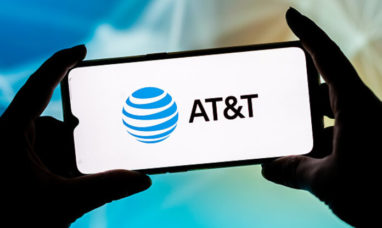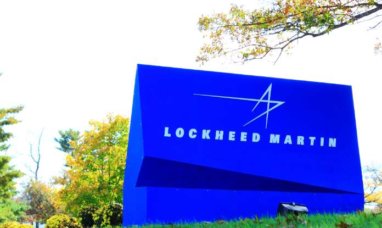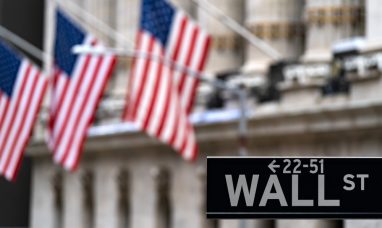NVIDIA Stock (NASDAQ:NVDA)
Nvidia stock experienced one of the greatest one-day moonshots in the history of the stock market on May 25. It is the most notable instance of artificial intelligence intoxicating investors to date. CFO Colette Kress made it clear during the earnings call for Q1 2024 (which ended on April 30) that the company that designs and manufactures computer graphics processors anticipates tremendous growth in the years to come as data centers inevitably switch to its products that incorporate AI. “Generative AI is driving exponential growth in compute requirements and a fast transition to NVIDIA accelerated computing,” Kress said. Jensen Huang, the CEO, predicted in the press release that AI would offer limitless opportunity, which has revived the rally in big tech. In his article, Huang predicted that “a trillion dollars of installed global data infrastructure will transition…to accelerated computing as companies race to apply AI to every product, service, and business process.”
The Market Value of Nvidia
The market capitalization of Nvidia already reflects the enormous premium that investors placed on that lofty goal. An enormous increase in guidance, which investors interpreted as evidence that Nvidia is already starting to ride AI to one of the fastest profit explosions ever, was what set off the takeoff on May 25. According to Kress’ prediction, revenue will increase by 52% to $11 billion in Q2, indicating that Nvidia’s growth has reached a completely new level. Shares rose 24% by the close of business on May 25 as a result of that news. Nvidia’s market cap increased by $184 billion, or $755 billion, in a single session. It now has a two-thirds higher value than Tesla. The only companies to have ever experienced greater dollar gains in a single day were Apple, Amazon, and Microsoft, each by a “puny” $7 billion ($191 billion) more.
Nvidia Stock Price and Future Earnings Drivers
The surge made it much more difficult for people or funds purchasing Nvidia’s stock at these prices to get a respectable return, even though it proved to be a rare windfall for those who already own the stock. What appeared difficult on May 24 appears nearly impossible today. To comprehend why, let’s look at how much Nvidia must make in ten years to support its current valuation, which is approaching the threshold of the $1 trillion club.
Remember that the other club members, Apple (NASDAQ:AAPL), Microsoft (NASDAQ:MFST), Amazon (NASDAQ:AMZN), and Google (NASDAQ:GOOGL), have already achieved enormous earnings that have driven down their PE ratios, leaving Nvidia behind the trillion clubs it is almost joining. Apple, for instance, has a multiple of 29 and still appears to be very wealthy. Even if Nvidia achieves its Q2 revenue growth target of over 50%, its stock will still be trading at an absurd PE of around 80.
Assume that investors will want a return on their Nvidia investment of at least 10% annually. To put it mildly, this stock is risky. For Nvidia to even have a chance at the kind of success the market has built into its price, the A.I. excitement must play out in a big way. Although Nvidia pays a small dividend, we’ll assume for the purposes of this analysis that it reinvest all profits and that all returns come from capital gains or an increase in the stock price. Nvidia will have a market value of $2.5 trillion if shares increase by 10% annually through the spring of 2033 to reach our target.
The PE of Nvidia is Incredibly High
What will be a reasonable PE in ten years? We’ll use 20 because it assumes Nvidia will continue to be in a high-octane phase well past our decade-long window and that its profit growth will outpace its cost of capital. In that case, Nvidia would need to be generating $125 billion in revenue annually in ten years. That amounts to a third more than Apple, the nation’s top earner over the previous four quarters.
Over a ten-year period, Nvidia must average 27% annual earnings growth in order to reach its goal. And that stipulation assumes it won’t increase its share count significantly, which might be required to pay for the new manufacturing facilities required to support its expansion in AI.
David Trainer, the founder of the investment research firm New Constructs, developed a model that demonstrated that in order to reward investors, Nvidia must in fact scale a steep mountain while racing at the top, unwavering speed. Trainer believes Nvidia is a good investment, provided it can boost revenues by 20% per year for the next 20 years while increasing operating profit after tax from the current 27% to almost 45%.
Trainer’s handicap for that magical performance is how likely? “You’ve heard of priced for perfection,” he said to Fortune. “This is being priced for fantasy.” Of course, we’ve seen a number of tech titans achieve feats comparable to the outstanding growth performance Nvidia must achieve. The issue is that Nvidia is already more expensive than Amazon and Meta, a former trillion club member, by more than 80%. Nvidia may still be a very successful business, but given that its price already includes such Homeric expectations, it is a bad investment. It is best to take a deep breath, refrain from getting wasted on the vision, and focus on the numbers soberly. Otherwise, a terrible hangover is in store.
Featured Image: Freepik















